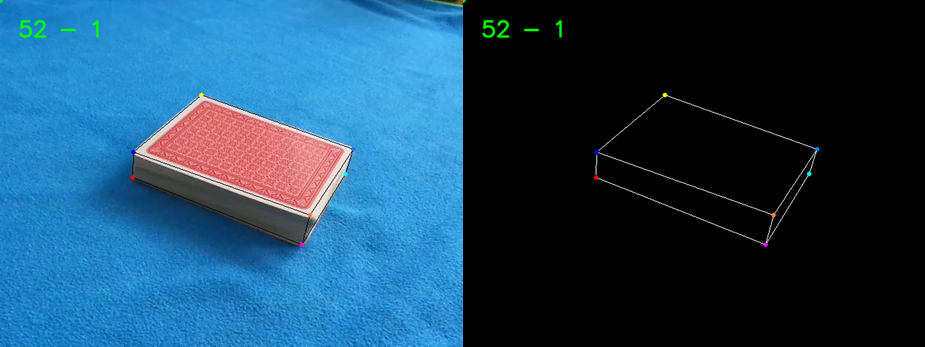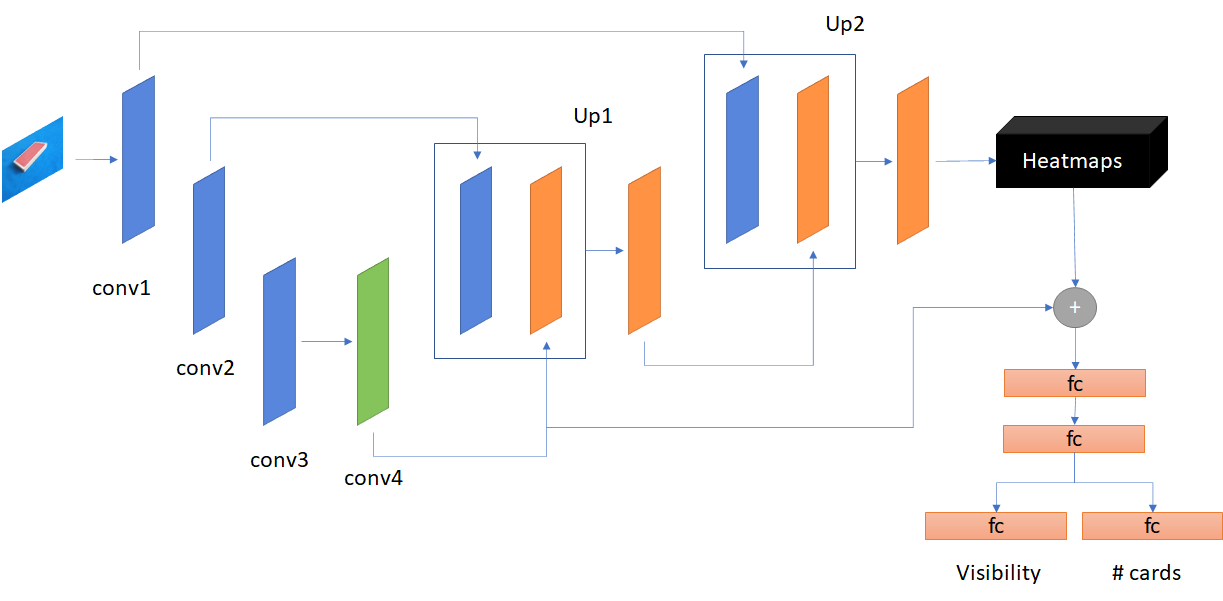My interest in pose estimation grew during the summer of 2020. Since I finished my master's degree, I've worked mostly on supervised image classification, and I wanted to expand my knowledge.
However, I didn't want to use famous datasets such as MPII Human Pose or DensePose-COCO because I don't have a powerful laptop (training on a 2012 CPU is not fun). So I decided to create my own dataset related to one of my hobbies: magic!
I thought teaching an "AI" (I hate being so unspecific...) to estimate the amount of cards in a packet would be a nice side project. It may seem surprising to the reader, but this is a common effect in card magic, with plenty of versions and authors. I also tought it might be fun to create a simple app, but that is way too much for one person.
I recorded around 52 videos of a pack with a different amount of cards (from 1 to 52). Then I subsampled the videos by 1/20 and labelled the remaining frames.
There are eight keypoints:
- Upper left (face) corner
- Upper right (face) corner
- Upper left (back) corner
- Upper right (back) corner
- Lower left (face) corner
- Lower right (face) corner
- Lower left (back) corner
- Lower right (back) corner
The keypoint locations are used to generate the heatmaps, which consist of small 2D-Gaussians. The coordinates of the peak values in each Gaussian/heatmap correspond to each keypoint location. This is very useful because it makes the ground truth less sparse. (Warning: the following heatmap was resized and doesn't look too good).
I decided to use an oversimplified UNet with some tweaks.
- The main path of the model generates eight heatmaps, one for each keypoint.
- In order to predict the amount of cards of the packet, I decided to combine the output of the downsampling part with the eight heatmaps (after some pooling to reduce the size of the maps).
- To prevent backprop from doing weird things, I first detach these masks from the computation graph and then concatenate them with the encodings from the downsampling part (green block).
- I finally predict the amount of cards (normalised, i.e. 0 to 1) and classify each keypoint as visible/not visible from the heatmaps. This is used to decide which keypoint is shown in the final output.
This is what the model looks like:
- Heatmaps: I use channel-wise MSE and compare the predicted maps to the ground truth.
- Number of cards: I also use MSE.
- Keypoint detection: BCE should do the work. In the end this part is a binary classification (visible/not visible).
The overall loss function (L) is: $$ L = MSE(heatmap) + MSE(cards) + BCE(detection) $$
The metric (M) is based on the number of cards predicted: $$ M = MSE(cards) $$
This is what I get after 120 epochs (ugh, there is a bit of over-fitting):
This is an example of the output of the current model with the validation set:
With a mean card error (M) of 4 cards. Not bad for a simple model!
- I should definitely move onto more powerful yet small models. Maybe MobileNet?
- Getting more data is a must.
- I will probably try separating the pose estimation stage from the prediction of the number of cards.
- ...
- Why am I still doing this?
These are the readings where I got the inspiration from:
[1] Joint Training of a Convolutional Network and a Graphical Model for Human Pose Estimation
[2] Stacked Hourglass Networks for Human Pose Estimation
[4] Human Pose Estimation With Stacked Hourglass Networks and Tensorflow
[5] U-Net: Convolutional Networks for Biomedical Image Segmentation




